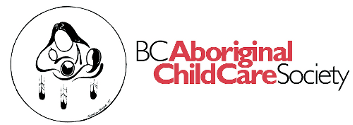Linking past to present to create and image of the child Eileen Hughes. [citation] :
Material type: ArticlePublication details: [Columbus : College of Education, Ohio State University], 2007Subject(s): Early childhood education -- Philosophy | Early childhood education -- Reggio Emilia | Early childhood education -- United States
In:
Theory Into Practice Vol 46, no. 1 (2007), p. 48-56Abstract: Principles of the Reggio Emilia approach are a catalyst for thinking about practices in early childhood education. Teachers in the child care system of Reggio Emilia encourage us to think about our image of childhood and the ways we interact with children, plan curriculum, and design environments. This article examines experiences in a rural Alaskan Head Start program and the initial steps to identify an image of the children in their program. How do we connect principles of the Reggio Emilia approach within our own cultural context? How do we start rethinking our image of children in our own classrooms? These questions are addressed in the remote Cup’ik village of Chevak, Alaska. The author derives general guidelines from the Chevak experience that will be useful for other programs seeking to discern the meaning of childhood for their particular cultural context.
ArticlePublication details: [Columbus : College of Education, Ohio State University], 2007Subject(s): Early childhood education -- Philosophy | Early childhood education -- Reggio Emilia | Early childhood education -- United States
In:
Theory Into Practice Vol 46, no. 1 (2007), p. 48-56Abstract: Principles of the Reggio Emilia approach are a catalyst for thinking about practices in early childhood education. Teachers in the child care system of Reggio Emilia encourage us to think about our image of childhood and the ways we interact with children, plan curriculum, and design environments. This article examines experiences in a rural Alaskan Head Start program and the initial steps to identify an image of the children in their program. How do we connect principles of the Reggio Emilia approach within our own cultural context? How do we start rethinking our image of children in our own classrooms? These questions are addressed in the remote Cup’ik village of Chevak, Alaska. The author derives general guidelines from the Chevak experience that will be useful for other programs seeking to discern the meaning of childhood for their particular cultural context.
Principles of the Reggio Emilia approach are a catalyst for thinking about practices in early childhood education. Teachers in the child care system of Reggio Emilia encourage us to think about our image of childhood and the ways we interact with children, plan curriculum, and design environments. This article examines experiences in a rural Alaskan Head Start program and the initial steps to identify an image of the children in their program. How do we connect principles of the Reggio Emilia approach within our own cultural context? How do we start rethinking our image of children in our own classrooms? These questions are addressed in the remote Cup’ik village of Chevak, Alaska. The author derives general guidelines from the Chevak experience that will be useful for other programs seeking to discern the meaning of childhood for their particular cultural context.

There are no comments on this title.